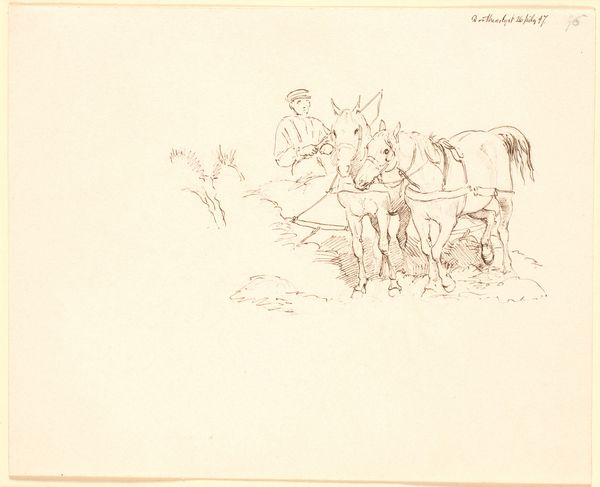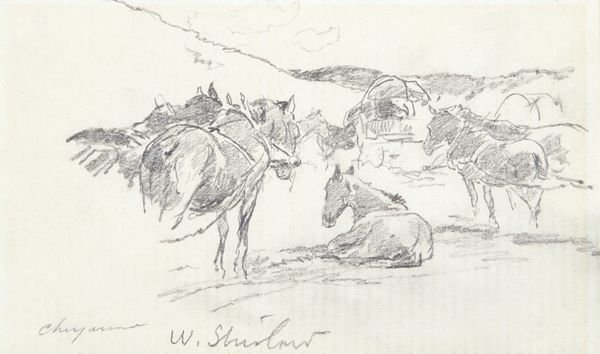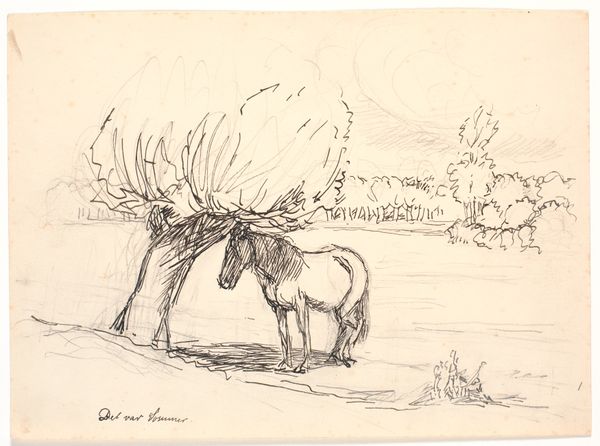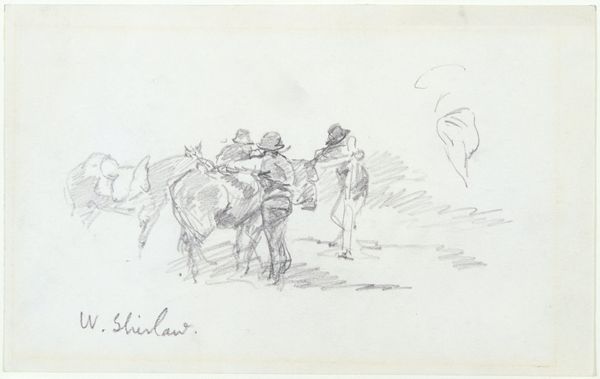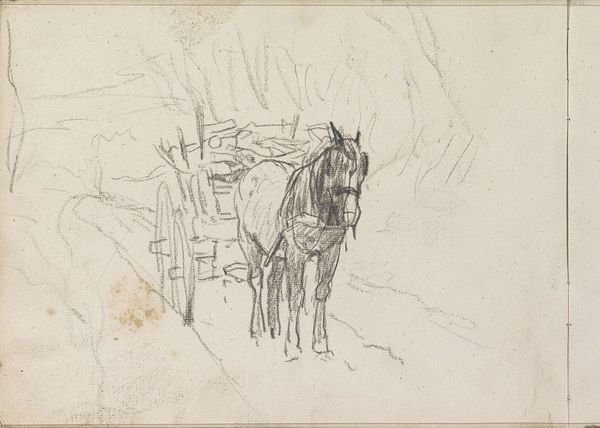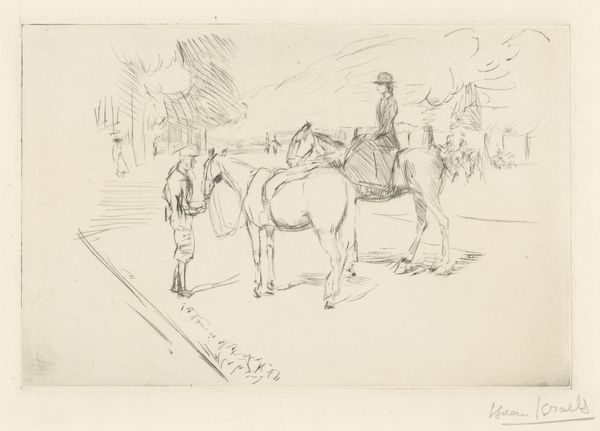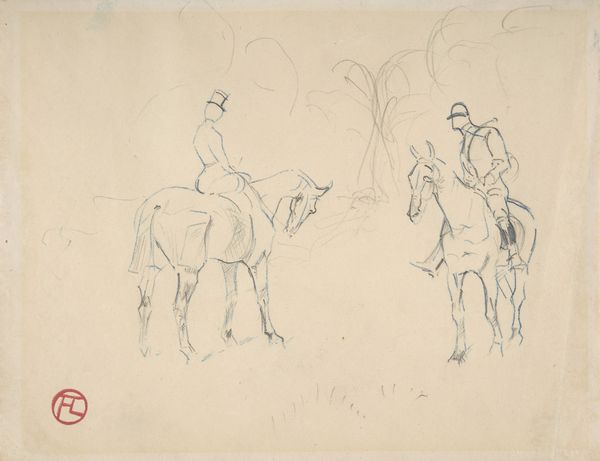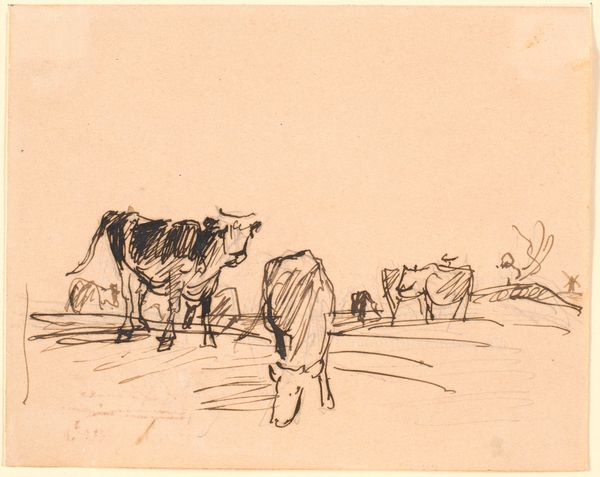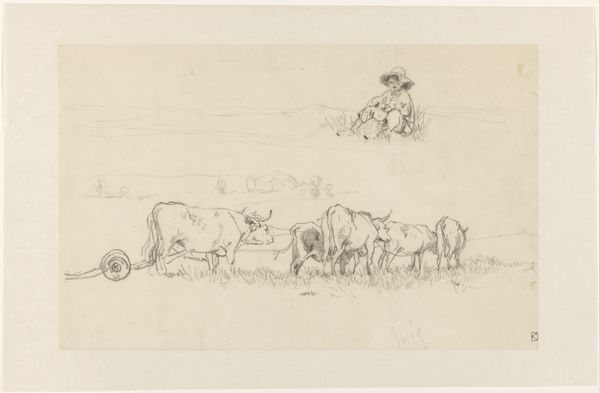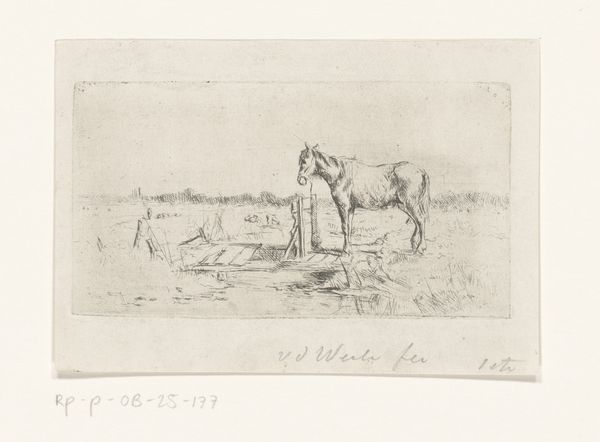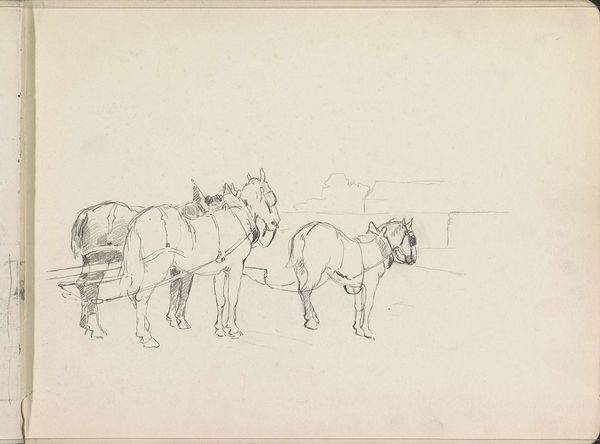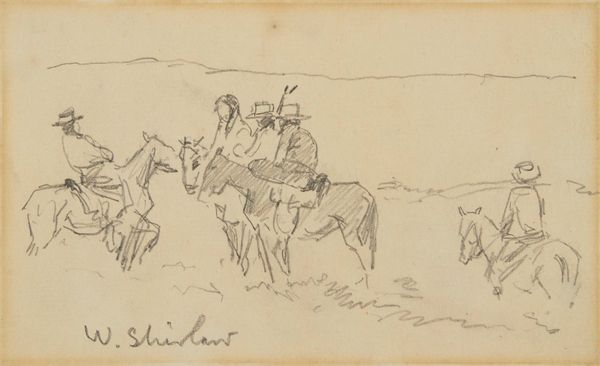
drawing, paper, pencil, graphite
#
drawing
#
pencil sketch
#
landscape
#
paper
#
pencil
#
graphite
Dimensions: 3 3/4 x 7 in. (9.53 x 17.78 cm)
Copyright: Public Domain
Curator: Walter Shirlaw's graphite drawing, "Sketch made on Indian Reservation," dates back to around 1890 and provides us a glimpse into life in the Indigenous Americas during a turbulent period. Editor: The overall impression I get is one of stillness, but also perhaps watchfulness. The landscape is barely suggested, making the scene feel quite immediate, almost as if the artist sketched this very quickly in the field. Curator: Shirlaw was part of a broader Realist movement, particularly interested in depicting scenes of everyday life and labor. His connection to the Indigenous Americas is more nuanced; while his intention may have been documentation, we can't ignore the complicated history of representation. Consider the implications of an outsider capturing and framing this community’s existence, especially during the reservation era. Editor: Exactly, who is framing whom, and for what purpose? I appreciate how the artist uses soft, gentle shading, rather than hard lines that would risk objectifying his subject. Look at how the horses appear to almost merge into a single mass—there’s a fluidity there that hints at interdependence and a sense of place. And then that lone figure, contemplative perhaps? Curator: Absolutely. The individual is depicted with a level of respect. Are they resting, planning, or just pausing to consider their situation? It forces us to ponder their interiority beyond colonial narratives. There is agency hinted here, I think. We also need to question if "Indian Reservation" is truly indicative of the cultural specificities and localized colonial violence exacted upon these groups? What specific Nations lived and still reside on that reservation? What treaties were imposed upon them? Editor: Contextualizing it within a socio-political narrative highlights the artist's lens, which is still filtered through his Western perspective. Recognizing those power dynamics—who gets to represent whom and why—opens critical pathways. It serves as a powerful invitation to ask questions about power structures at play. Curator: This sketch becomes an entryway into deeper dialogues. We must actively consider its positionality while seeking a deeper commitment to hearing and learning Indigenous perspectives in their own voices, regarding representation and self-determination. Editor: It also encourages us to challenge and diversify dominant historical narratives and seek multiple truths about representation.
Comments
No comments
Be the first to comment and join the conversation on the ultimate creative platform.
